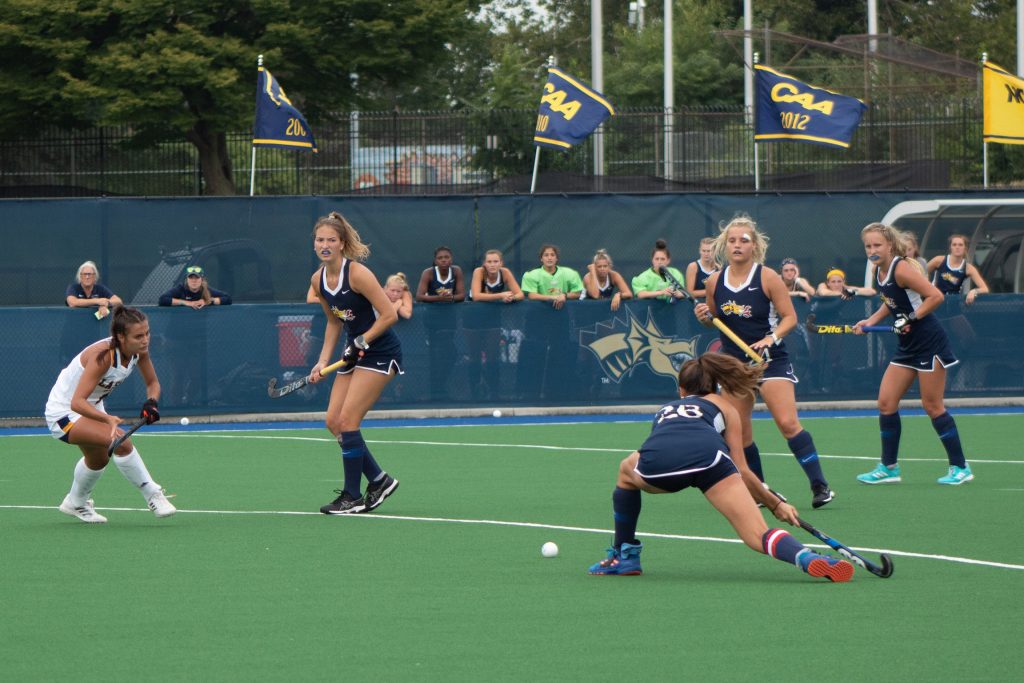
When Congress passed the Title IX law in 1972, it revolutionized athletics for women in universities nationwide. Fifty-two years later, how well does Drexel do when it comes to promoting equity in athletics? An analysis by The Triangle found that for the most part, Drexel goes above and beyond the requirements to comply with Title IX laws. And compared to other Philadelphia-area universities, Drexel is much better at funding its male and female sports equally.
In the most basic terms, Title IX in athletics is a comprehensive federal law that requires universities to do three things. First, men and women must be given equitable opportunities to participate in sports. Secondly, female and male athletes must be given athletic scholarships proportional to their participation. Lastly, Title IX requires equal treatment of all athletes. Equal treatment refers to but is not limited to things such as gear, facilities, game/practice times and promotions.
In practice, these three requirements can mean many things. One example that the NCAA gives on its website would be a situation where the women’s team practices every day at 6 a.m. while the men’s team practices at 8 a.m. This is against the third part of the law since the women’s team is given a less favorable practice time in comparison to the men’s team.
There are many misconceptions about what Title IX means, with one of the most common ones being that schools are required to spend equally on both men’s and women’s sports, but this is not true. According to the NCAA, equal spending is not required. “The only provisions that require that the same dollars be spent proportional to participation [are] scholarships.”
The justification for this is that different sports require different things. While lacrosse players need helmets, sticks, pads and cleats, swimmers only need a swimsuit, goggles and a swim cap. The expenses for gear of the lacrosse team will be far greater than the expenses of gear for the swimming team, regardless of gender.
Unfortunately, loopholes exist within the law that allow colleges to misrepresent the number of female athletes they have. According to an investigation from USA Today, the three most common loopholes include counting male practice players as female athletes, padding rowing rosters and double counting track & field athletes.
Drexel takes advantage of one loophole by counting male practice players as females on women’s basketball teams. Male practice players on women’s basketball teams are typical, as these practice players allow the female basketball players to practice against bigger and taller opponents. By counting the men as women, this often doubles the size of the overall women’s basketball roster.
For the 2022-2023 season, Drexel reported that it had 28 women on its women’s basketball team. However, according to the Drexel Athletics website, only 13 women were rostered. This is a difference of 15 women unaccounted for.
One way to measure how a university prioritizes equality is to look at the publicly available information as mandated by the Equity in Athletics Disclosure Act (EADA). This report details overall spending for individual sports, coach’s salaries, scholarships and more. From this information, it is possible to see that Drexel spent almost equally on its men’s and women’s teams.
As Drexel spends a relatively similar amount on their men’s and women’s teams. Compared below are Philadelphia-area schools, which do not spend equally on their men’s and women’s athletic teams.
| University | Total Men’s Spending | Total Women’s Spending | Difference (Men vs Women) |
| Drexel University | $10,873,341 | $10,395,806 | $477,535 |
| Saint Joesph’s University | $11,185,554 | $8,747,484 | $2,438,070 |
| University of Pennsylvania | $12,694,561 | $7,360,972 | $5,333,589 |
| Villanova University | $34,732,073 | $14,637,949 | $20,094,124 |
| Temple University | $39,238,735 | $15,594,504 | $23,644,231 |
These colleges are not breaking any laws by spending unequally on men’s and women’s sports, but the lack of investment in female sports raises questions of who gets priority. By spending less on female sports, it signals that these sports do not matter as much to the university, which means students will not attend games, women’s teams gain less exposure, and it allows the university to justify that it should spend less on their female athletes.
On the other hand, Drexel is signaling to its students, athletes, and shareholders that female sports matter, and this has paid off. Drexel Women’s Basketball made it to the March Madness tournament for the 3rd time in its history last season. The Women’s Lacrosse team continues to dominate, ranking #20 in the nation and reaching the NCAA tournament four years in a row.
While Drexel is in compliance with Title IX, there are always more steps they can take to continue prioritizing female athletes.
One way Drexel Athletics can do this is to not take advantage of the loophole that counts male practice players as females. Counting men as women in the EADA report misrepresents and inflates the true number of female athletes.
Recently, Drexel announced that it was forming its own NIL collective. This collective expands access to NIL deals for student-athletes at Drexel and allows them to profit off of their likeness during their time in college. While no athletes have been announced as part of the Dragon Fire Collective, it will be important for the collective to invest in a wide diversity of athletes. Most of the highest earning student-athletes play basketball or football. Since Drexel does not have a football team, there is more of an opportunity to sponsor athletes who might not even be considered at bigger colleges who have football stars.
Overall, Drexel does well in ensuring that it promotes equity for its male and female athletes. Title IX has completely changed the landscape of college athletics for women. While there are still ways to go, Drexel will be at the forefront of equality.
Paulie Loscalzo contributed to this report.


